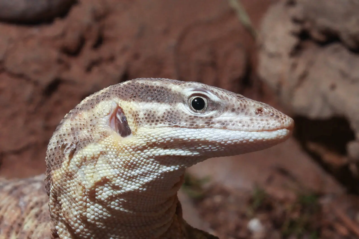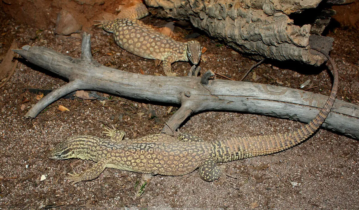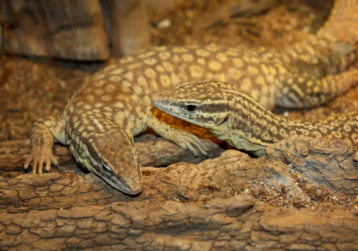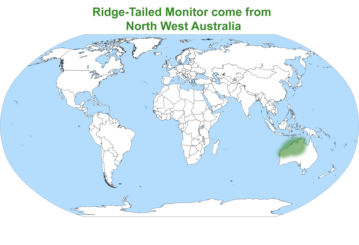Spiny Tailed Monitor
Reptilarium Animals
Spiny Tailed Monitor
Conservation status (Least Concern)


The Spiny-tailed monitor (Varanus acanthurus) is a burrowing species of lizard found in Australia. It is also known as the Australian spiny-tailed monitor, the Ridge-tailed monitor, the Ackie's dwarf monitor, and colloquially simply Ackie monitor.
The Spiny-tailed monitor, a medium-sized monitor lizard, can attain a total length of up to 70 cm (27 in), although there are unconfirmed reports of wild individuals growing up to 34 inches. The tail is about 1/3 or 2/3 times as long as the head and body combined. The upper side is a rich, dark brown and painted with bright-yellowish to cream spots, which often enclose a few dark scales. Its tail is round in section and features very spinose scales. There are 70-115 scales around the middle of the body. The Spiny-tailed monitor is distinguished from the similar-looking species V. baritji and V. primordius by the presence of pale longitudinal stripes on the neck.



These lizards are found in northern Western Australia, in the Northern Territory, and in the western and north-western parts of Queensland. They inhabit savanna woodlands with arid rocky ranges and outcrops.
Spiny-tailed monitors are diurnal, typically solitary ground-dwellers. They are most often found in their shelter, mainly under rock slabs, wedged among boulders or in rock crevices, and in underground burrows. Only rarely do they hide in spinifex. Sheltering underground gives them access to humid micro-climates which helps keep them hydrated enough to survive the otherwise arid nature of their habitat.
Spiny-tailed monitors are carnivores. They prey mainly on grasshoppers, beetles, cockroaches, spiders, isopods, caterpillars, cicadas, snails, stick insects, centipedes, crickets, and ticks. Small lizards such as skinks, geckos, or dragon lizards are also eaten, making up about a third of their diet. Approximately 70% of their water requirement comes from food.

